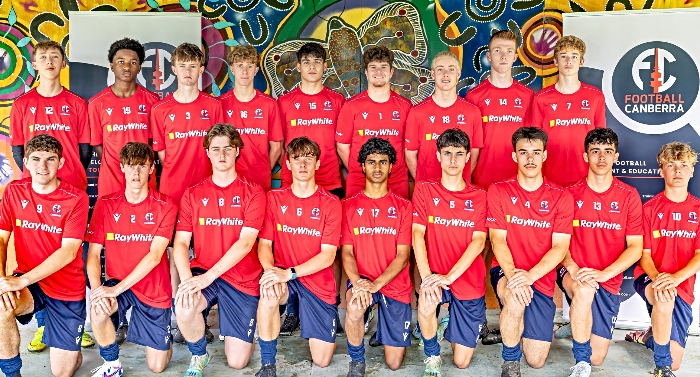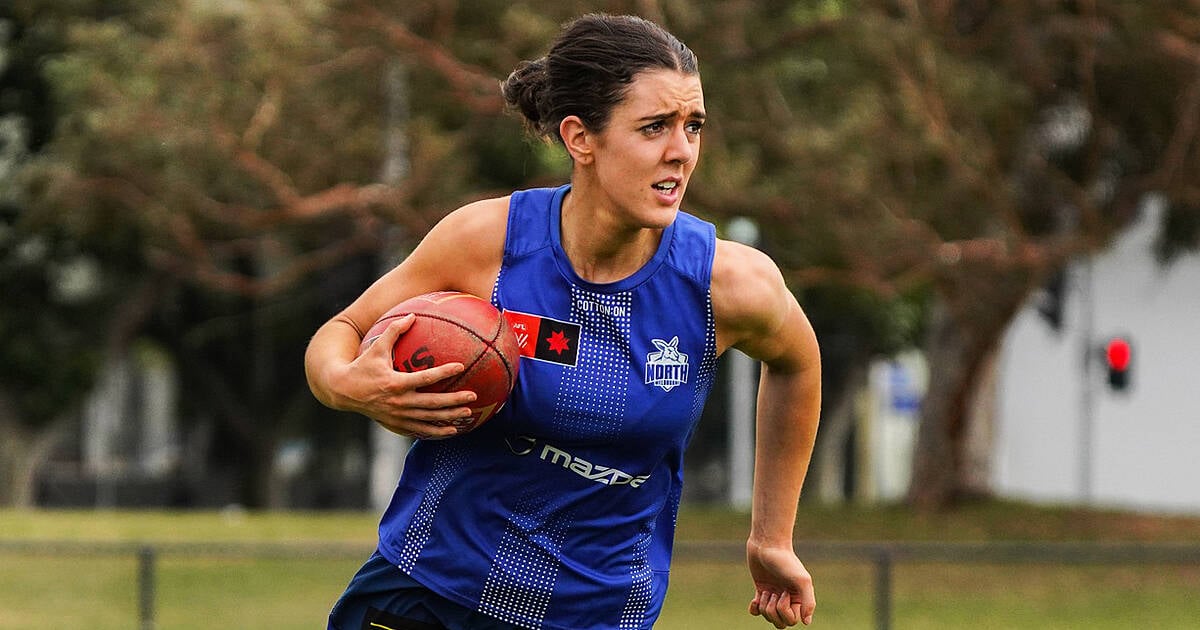The 10 major questions Football Australia must answer

- by Admin
- June 13, 2024

If you had your choice, you’d undoubtedly rather be in Football Australia’s position than the Australian Professional Leagues’ (APL) right now. Whereas the latter are attempting to drag themselves out of the mire and re-establish themselves with a new “football-focused” approach, Australia’s peak footballing body finds itself in fine health, possessing the luxury of being buoyed by the commercial juggernaut that is Australia’s favourite sporting team in the Matildas, as well as the Socceroos.
Indeed, increasingly common calls for the A-Leagues to return to the auspices of Football Australia probably miss the point when you look at the state of play, given the key reasons Football Australia has likely gone from strength to strength in recent years is because it hasn’t needed to worry about administering the Australian top flight over the past few years, including through a COVID-19 pandemic.
Instead, it has been able to devote attention to hosting a Women’s World Cup and administrating a more limited national team and grassroots scope. Further, it is often glossed over that when the A-Leagues were breaking away from the federation it wasn’t the administration of current chief executive James Johnson in charge but, instead, Steven Lowy as chair and David Gallop as CEO, with the A-Leagues well and truly beginning their downward trajectory by that point. The A-Leagues’ unbundling was and remains sound — remember that FIFA was hovering over proceedings threatening sanctions if it didn’t go through; it’s just not been executed the way anyone would have wanted. Nonetheless, despite Football Australia’s stronger hand, there are still questions facing the federation and a lot of them come from this strong position; hovering over the commitments and initiatives it’s been able to begin from the perceived position of safety and comfort. But football, life, is fickle. And things can change in an instant.
As was the case with the questions for the A-Leagues, ESPN posed all of these questions directly to Football Australia. The responses the federation chose to provide have been noted in each question.
1. What’s the status of efforts to introduce the National Second Tier? How many teams are locked in and will it launch in 2025?
Much fanfare greeted the announcement of the eight foundation clubs that would make up the first iteration of the National Second Tier last November, but since then there’s been mostly radio silence from Football Australia. That’s despite the federation flagging that at least two more sides would be added to the league before its mooted commencement in March or April of 2025.
With nine months until that date, we’re not quite yet at the point wherein serious alarm bells are being raised about the competition’s ability to meet its target launch, but it would be nice at some stage to at least get some definitive word from the federation about the status of the competition.
Football Australia confirmed in January that it was in a Request for Proposal phase to fill those final spots and ESPN understands that process will wrap-up in July with news to come after the Olympics. But any, morsel of information would at the very least help out the already announced eight clubs in their efforts to secure sponsorship and support for the 2025 campaign — something they can take to potential backers and say ‘See! It’s still happening! Jump on board.’ — and prevent a vacuum that rumour, scuttlebutt, and innuendo could fill.
2. What is the status of the domestic transfer system?
For a while, it was looking like the introduction of a men’s domestic transfer system was going to be Football Australia chief executive James Johnson’s signature reform, and a series of changes were indeed made at the National Premier League and below levels regarding training compensation and contracting. Yet this is another area that has gone quiet recently, despite the new appetite for development and the sale of players by the A-Leagues.
The core impediments to the introduction of such a system in the Australian top tier remain mostly the same as they always have been. First, it requires the buy-in and input of not just Football Australia but also the APL, its clubs, and the players via their union, the PFA. The history of Australian football suggests that, unless there’s an asteroid approaching, you’d have better luck herding cats. Second, it would almost certainly require the abolition of the salary cap.
Given the deficit of trust that, though improving in recent times — it being one of the main priorities of APL chair Stephen Conroy — such a monumental reform, one that would by necessity require some give and take from all parties, is already starting from a long way back.
3. How will Football Australia determine the coach of the Matildas following the Paris Olympics?
It looked like Tony Gustavsson wouldn’t even see out the end of his Matildas contract — the end of the Paris Olympics — when he was linked to the USWNT job and reportedly interviewed for the Sweden men’s gig. But after a hum of speculation, it’s been very quiet. What we can be sure of is that the Swede will take the Matildas to Paris
“I’m gonna be honest, I’ve been a bit emotional this camp because according to the situation right now, it might be my last camp,” Gustavsson said after recent friendlies against China. “Everyone knows that my contract goes out, post-Olympics. And as of right now, this might be my last camp on home soil and what I’ve said to myself, if so, I’m gonna embrace and enjoy every single second, and every minute of this camp, which I have.”
The post-Olympics period had been envisioned as a time of re-generation for the side, and whether Gustavsson was the right man for the job or the person who even wanted the job, was up for debate. Was he someone who had been brought in to take a Golden Generation of players as high as they could for a home World Cup before moving on? Or can he prove a long-term figure? A case could be made that he’d got as much out of this team as he could and that it was time for a clean break but, at the same time, Football Australia’s habit of backing their existing coaches suggested that if he pushed, an opportunity to stay could come.
However, securing the hosting rights for the 2026 Women’s Asian Cup adds a new dimension to all this. All of a sudden, an opportunity to play in (and potentially win) another major tournament on home soil could induce the veteran core of the Matildas to hang on for just a little bit longer and, following on from this, the appetite might be there to extend Gustavsson to at least the end of that tournament.
4. How does Football Australia plan to address recent adverse results from its junior national teams?
Both Gustavsson and Graham Arnold were appointed to their roles with the express instruction to build depth and that has seen both voice the importance of investing in and developing Australia’s junior national teams. Observe Football Australia’s creation of a women’s under-23 side and the funding that presently sees the Young Socceroos touring South America as an example.
But money is more a facilitator of development than an actual driving force — a $100 note never taught anyone how to scan a field — and recent results from Australia’s junior national teams have given pause for thought. While the Matildas are preparing for a third-straight Olympics and the Socceroos breezed through the second round of FIFA World Cup qualifying with a perfect record, most of the junior national teams haven’t been producing the results. Barring the Young Matildas, who will take part in the U20 Women’s World Cup in Colombia later this year, the Junior Matildas, Joeys, Young Socceroos, and Olyroos have all failed to qualify for their respective most recent international tournaments.
To use an example that Arnold likes to use, the Socceroos and Matildas are the cake that comes out of the oven but the junior national teams are the ingredients. For the senior side’s long-term success, those teams below them need to be of the highest quality.
5. Who oversees reviewing the junior national team’s performances and what criteria do they follow?
Following on from the above, this is a relatively simple one.
Not only do the junior national teams need investment and a long-term vision, but there needs to be a system in place wherein there is a clear, dispassionate review process in place. Some form of oversight consistently monitoring the progress (or lack thereof) being made is key, as is adjudging whether those trusted with this important task need further support themselves or remain the right person for the job.
Football Australia has informed ESPN that all national teams undergo a performance review after each tournament and that their new head of national teams, Gary Moretti — who began his role on Wednesday — will be a central figure in this process.
6. How can Australian football ease the costs associated with elite pathways, so it doesn’t miss out on potential talent for reasons beyond football ability?
The cost of playing football in Australia — especially as one approaches the elite pathways — is constantly raised as an issue in Australian football but, for the most part, there hasn’t been much in the way of improvement.
Admittedly, as Football Australia CEO James Johnson himself has anecdotally shared, there are plenty of cheap community avenues to playing football. Pointing to AusPlay data, the federation told to ESPN that the annual expenditure for football participants across the nation was $382 — less than swimming ($416), tennis ($454), and gymnastics ($929) but more than netball ($270), cricket ($258), and Australian Rules ($209) — and that, thanks to a longer season, average cost per session to play came in at $5, a dollar cheaper than cricket, the same price as netball, and one dollar more than AFL.
Of course, when one begins to enter the vortex of more centralised football, this begins to change –rising to a head when one gets to the junior NPL levels that are relied upon by pretty much everyone to develop kids who can go into the A-Leagues and, one day, national teams. Football Australia argues that elite services come at a cost. The fees associated with elite pathways are expected to cover not just training sessions and games but also “a club technical director, accredited coaches, strength and conditioning, medical staff, all training uniforms, match uniforms, tracksuits, kit bags, [and more],” for a season that can last around 44 weeks — which also brings into focus the costs of facilities.
That’s all true and unavoidable. We have constructed modern society in a manner that attaches a high price to excellence. But it’s here where economic realities meet sporting and cultural ones. Football is supposed to be the people’s game; the Socceroos and Matildas have been incalculably strengthened across their history by those who have existed at the margins of society and waves of newly arrived Australians and their children. But in an environment wherein the elite pathway costs thousands, how many kids from similar backgrounds are now missing out, not because of their talent, but because their parents can’t pay thousands to get them on the pathway that will allow them to realise their talent?
It will remain a question that Football Australia will need to continue to reckon with; allowing the next Garang Kuol or Lydia Williams to break through, and reducing the barriers that stand in their way.
7. What role does Football Australia see Member Federations playing in the years ahead? Do they have a future?
One of the most common complaints of Australian football is how fractured it is, how all the various bodies and authorities never seem to be pulling in the same direction. Already battling longstanding institutional biases, this is one of the reasons that the game struggles to source funding from various levels of government. Government at all levels wants the most bang for its buck when it’s deciding where to spend its money, preferring to fund projects in which various parties with similar goals are collaborating and singing off the same hymn sheet. It also abhors duplication and, for the most part, that’s what various footballing asks made in a vacuum from each other are seen as.
The Member Federations are a frequent target of the ire associated with this, with an oft-suggested solution being their dissolution and centralisation under the auspices of Football Australia — regional offices reporting to a central authority, rather than independent setups with their own executives, constitutions, motivations, funding asks, scheduling, and political Game of Thrones.
Constitutionally, however, such a move is almost impossible. The various state bodies possess 54.9 of the 100 votes in Football Australia’s congress; turkeys don’t vote for Christmas and Member Federations won’t vote for their extinction. But is there a streamlining of resourcing and a means of improving collaboration that can be found? If so, how does Football Australia push for this?
8. What’s the status of the Women’s Australia Cup?
Since Football Australia’s intention to run a Women’s Australia Cup was revealed in March 2023, nothing else has been publicly revealed about the competition. That’s despite the tournament having a mooted start date of 2024. So what exactly is happening? With NPLW competitions and various state cup competitions around the country already in full swing, the scope for staging it this year is gone, so when will we see this competition launched?
The boom in women’s and girl’s participation that the federation said it was seeking to capitalise on with the tournament certainly isn’t dissipating, so the case for its introduction is ostensibly still there. Football Australia, for their part, has indicated to ESPN that plans are still in play to launch the Women’s Australia Cup and the competition’s start date may sync up with Australia’s hosting of the 2026 Women’s Asian Cup.
9. What is the status of Football Australia’s efforts to secure the Club World Cup?
After Football Australia decided not to submit a bid for the 2034 World Cup, the governing body shifted its attention to hosting the Women’s Asian Cup in 2026 — which Australia was awarded in March 2024 — and the Club World Cup in 2029. While a potential joint bid with New Zealand was floated in June 2023, the last official mention of the tournament from Football Australia stated that Australia alone felt like it was in a good place to welcome the world’s best club sides.
ESPN understands that Football Australia is in the “embryonic stages” of putting together bid that — while no formal bidding process has been established by FIFA yet — will likely go up against the likes of Morocco, Spain, and Portugal — who have stated their desire to host the event as something of a test run of sorts before the trio host the men’s World Cup in 2030.
The expanded Club World Cup — which is still a 32-team tournament, rather than the bloated 48-nation iteration coming to the men’s World Cup in 2026 — is set to run for the first time in 2025 in the United States, providing an insight into what could potentially be expected if it came to Australia and, very likely, encouraging Federal and State Governments to come to the party on funding once they realise they could host a tournament wherein the likes of Chelsea, Real Madrid, Manchester City, Bayern Munich, and Flamengo all come to town.
10. Does Football Australia have the ability to better streamline and make uniform the experience at a local level?
This gets back to the previously made points about splintering because, right now, the experience of playing football, registering for football, streaming football, watching football, and doing everything else involved in football is something of a jangled mess across the country. This isn’t always for the best, either, with ESPN told of the Squadi registrations system rolled out across Queensland and Western Australia resulting in chaos in local leagues, and how any semblance of publicly available and meaningful stat collation has effectively disappeared from Victoria this season — especially in the NPLW.
If there’s a way that Football Australia could collaborate with stakeholders across the country — from a Member Federation level and further down — to improve and make more uniform the experience at a local level, or at least implement a base level of standards around the country for certain practices, it would undoubtedly help improve the experience for the game’s large base.
The Latest News
-
December 25, 2024Gearing Up for Australian Open, Nick Kyrgios Elevated in Bold Predictions From Renowned Tennis Experts
-
December 25, 2024Dads’ day out! Australian stars unwind with with wives, kids at MCG. Watch | Cricket News – Times of India
-
December 25, 2024Border-Gavaskar Trophy: What is Australia’s record in Melbourne in Test matches? | Sporting News Australia
-
December 25, 2024India must continue to exploit ‘brittle’ Australian line-up: Ravi Shastri | Cricket News – Times of India
-
December 25, 2024‘I only bowled 24 balls’: Boland looks back in wonder at MCG marvel





